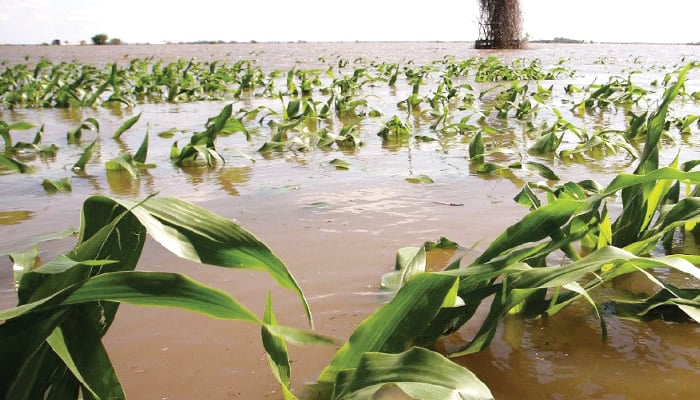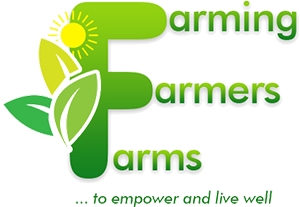The new Food and Agriculture Organisation of the United Nations study shows how digital solutions are empowering farmers and fishers to prevent losses and build resilient agrifood systems, amid Rome disasters, which have inflicted an estimated US$3.26 trillion in agricultural losses worldwide over the past 33 years, an average of US$99 billion annually, roughly 4% of global agricultural Gross Domestic Product.
According to a new report by the FAO of the United Nations, titled “The Impact of Disasters on Agriculture and Food Security 2025″, highlights how digital technologies are transforming how farmers, governments, and communities can monitor risks, anticipate impacts, and protect livelihoods.
The report provides the most comprehensive global assessment to date of how disasters from droughts and floods to pests and marine heatwaves are disrupting food production, livelihoods, and nutrition, while also demonstrating how digital innovations are shifting agrifood systems from reactive crisis management to proactive data-driven resilience-building.
“Digital technologies are already revolutionising how we monitor risks, deliver early warnings, and support farmers’ decision-making. From the 9.1 million farmers now accessing parametric insurance through digital platforms to the communities using FAO early warning systems to evacuate 90% of at-risk populations before disasters strike, we are witnessing a fundamental shift from reactive response to proactive risk reduction”, said FAO Director-General, QU Dongyu in the foreword to the report.
It noted that there is heavy toll on global food security, stressing that between 1991 and 2023, disasters wiped out 4.6 billion tonnes of cereals, 2.8 billion tonnes of fruits and vegetables, and 900 million tonnes of meat and dairy. These losses translate to a daily per capita reduction of 320 kilocalories 13 to16% of average energy needs.
Asia accounts for the largest share of global losses of 47%, totalling US$1.53 trillion, reflecting both the scale of agricultural production and the region’s high exposure to floods, storms, and droughts.

The Americas represent 22% of global losses or US$713 billion, driven by recurrent droughts, hurricanes, and extreme temperature events that heavily impact large commodity crop systems.
Africa, while recording lower absolute losses of US$611 billion, suffers the highest proportional impacts, losing 7.4% of agricultural Gross Domestic Product to disasters, the largest relative burden of any region. In economies where agriculture accounts for a significant share of employment and income, these losses have had severe consequences for food security and rural stability.
Small Island Developing States (SIDS) remain among the world’s most vulnerable to disasters such as cyclones, floods, and sea-level rise. Despite relatively small agricultural output, disaster-related losses represent a disproportionately high share of agricultural GDP.
The report also finds that marine heatwaves caused US$6.6 billion in losses between 1985 and 2022, affecting 15% of global fisheries. Yet, losses in fisheries and aquaculture remain largely invisible in disaster assessments, despite supporting the livelihoods of 500 million people.
FAO’s report further identifies digital transformation as a game-changer for agricultural disaster risk reduction, saying emerging tools such as artificial intelligence (AI), remote sensing, mobile connectivity, drones and sensors are now enabling hyperlocal, real-time insights that improve early warning, advisory services, risk transfer mechanisms and anticipatory action, which inlcudes FAO’s Climate Risk Toolbox (CRTB), Rift Valley Fever Early Warning Decision Support Tool (RVF-DST), Soil Mapping for Resilient Agrifood Systems (SoilFER), Fall Armyworm Monitoring and Early Warning System (FAMEWS), Early warning systems, like the Global Information and Early Warning System (GIEWS), FAO’s first integrated Risk Monitoring and Situation Room, the Financing for Shock-Driven Food Crisis (FSFC).
It noted that over 2.6 billion people remain offline, many in rural areas, most exposed to disaster risks, saying while digital solutions are expanding rapidly, the report warns that their full potential can only be realised through human-centred design.
FAO stresses that digital transformation must go hand in hand with capacity development, institutional strengthening, and coherent policy frameworks to ensure that innovations reach smallholder farmers, women, youth, and Indigenous communities.
The report calls on governments, international partners, and the private sector to advance digital innovation to enhance efficient and effective disaster risk reduction in agriculture and food security, as it also emphasises the need for integration of these digital solutions into national agricultural policies and strategies and calls for increased investments to support agrifood system transformation. Furthermore, the report underscored the critical importance of scaling up digital infrastructure and literacy to enhance accessibility and enable innovation to influence decision-making process.


